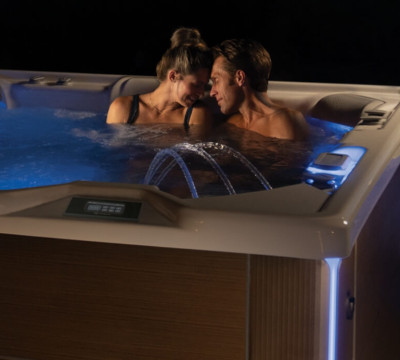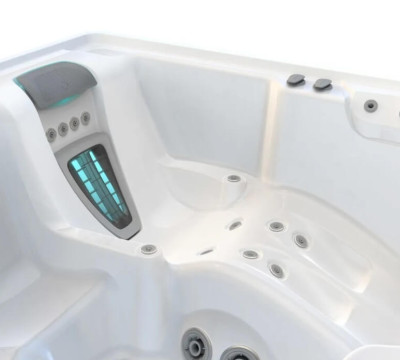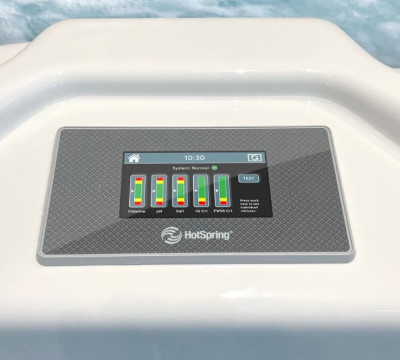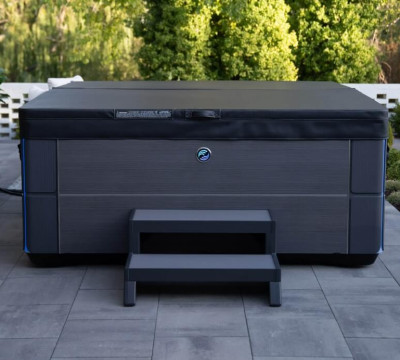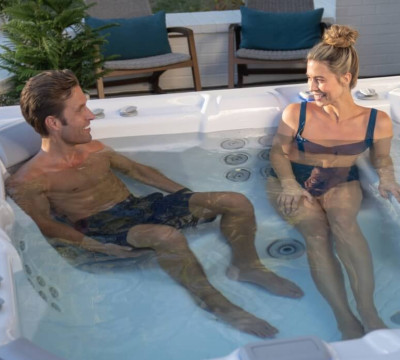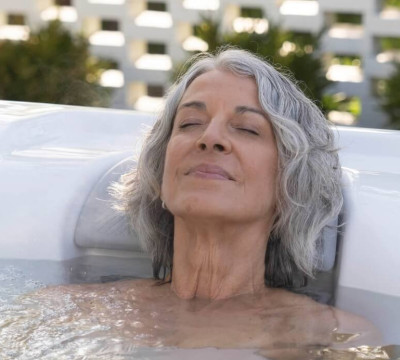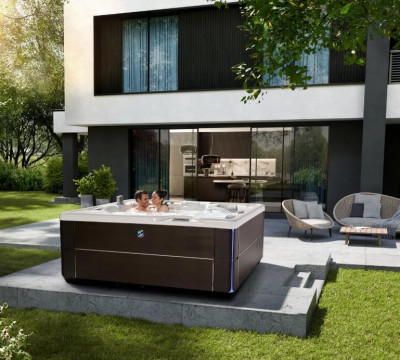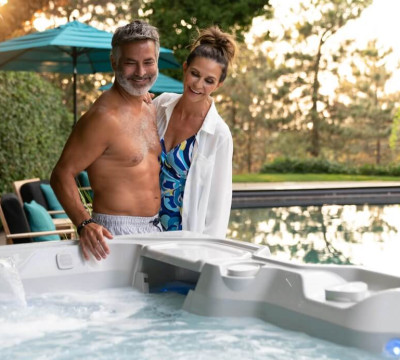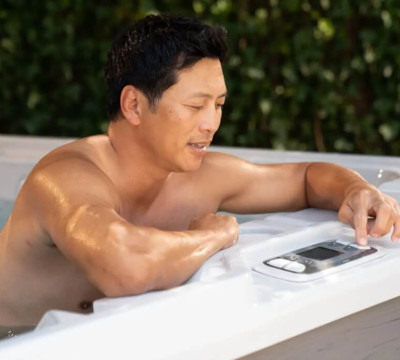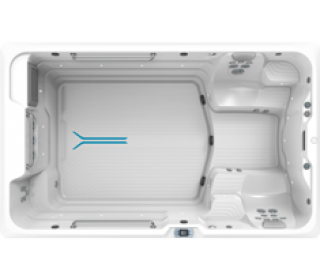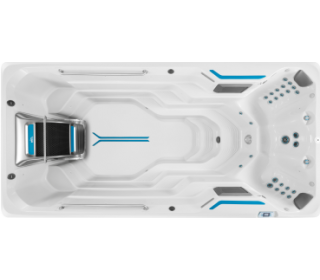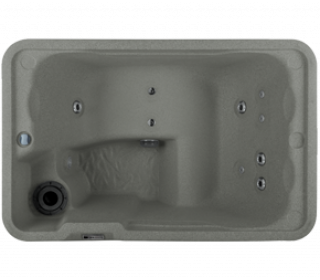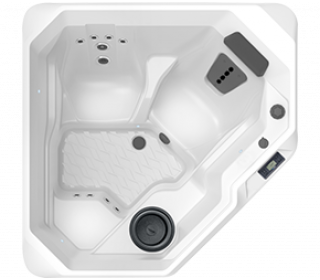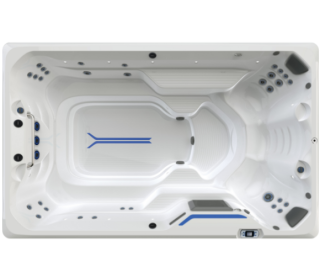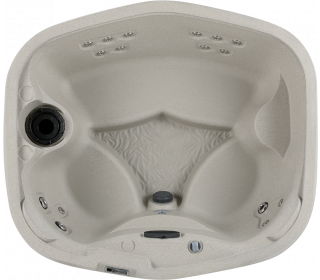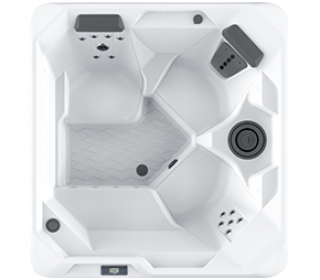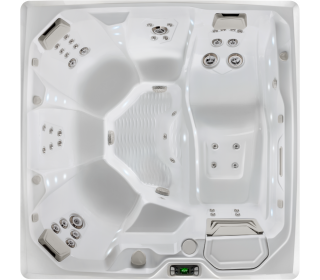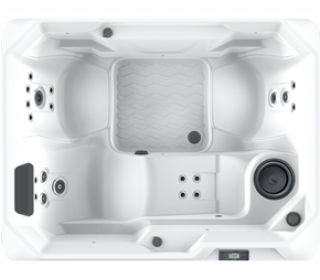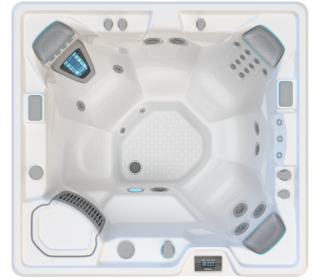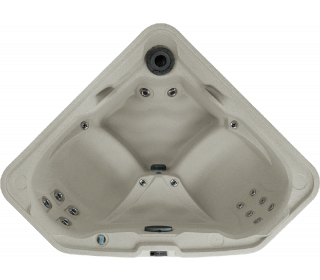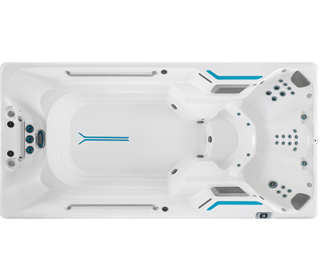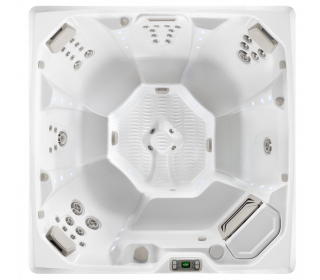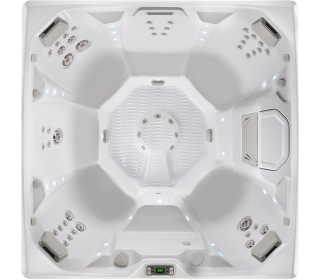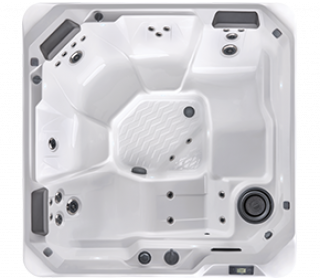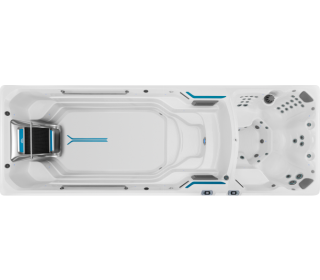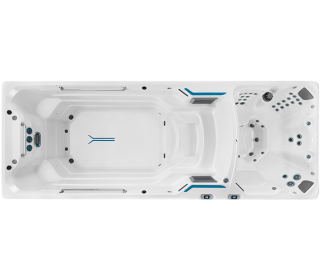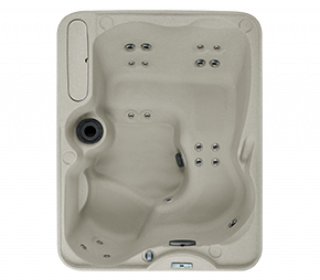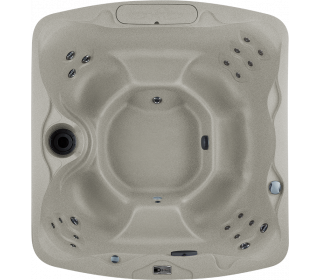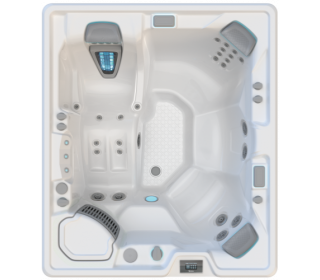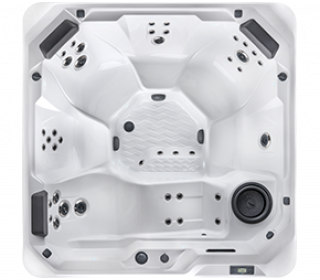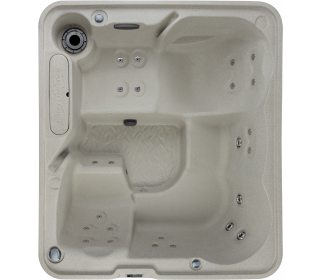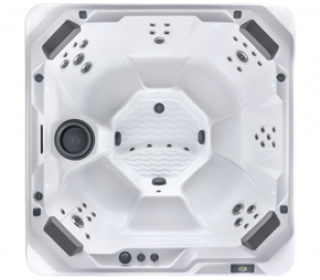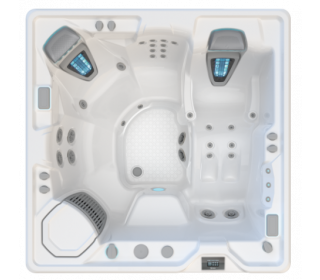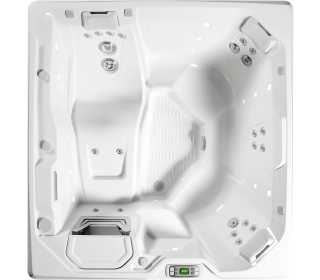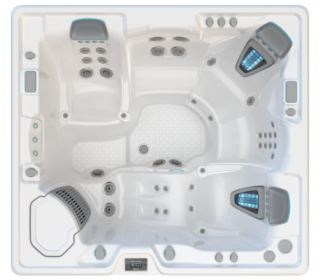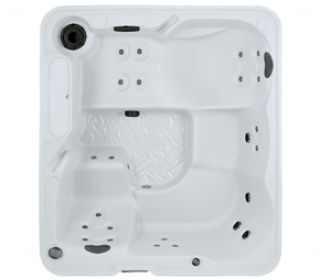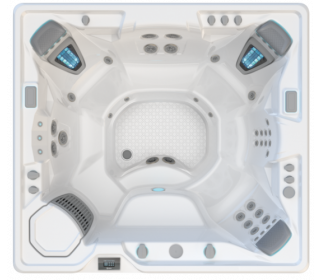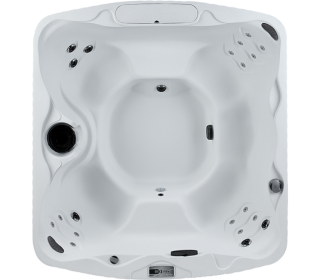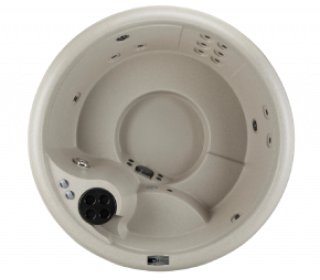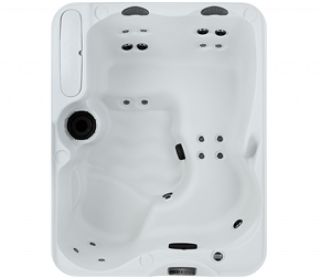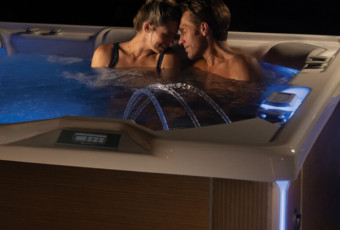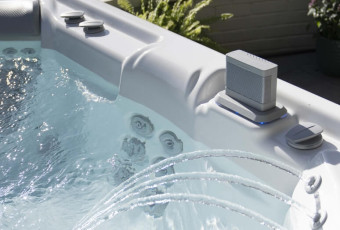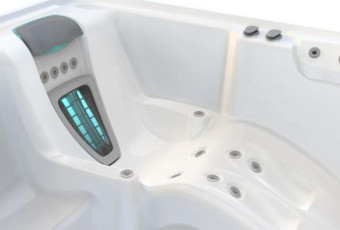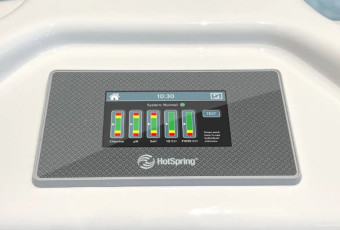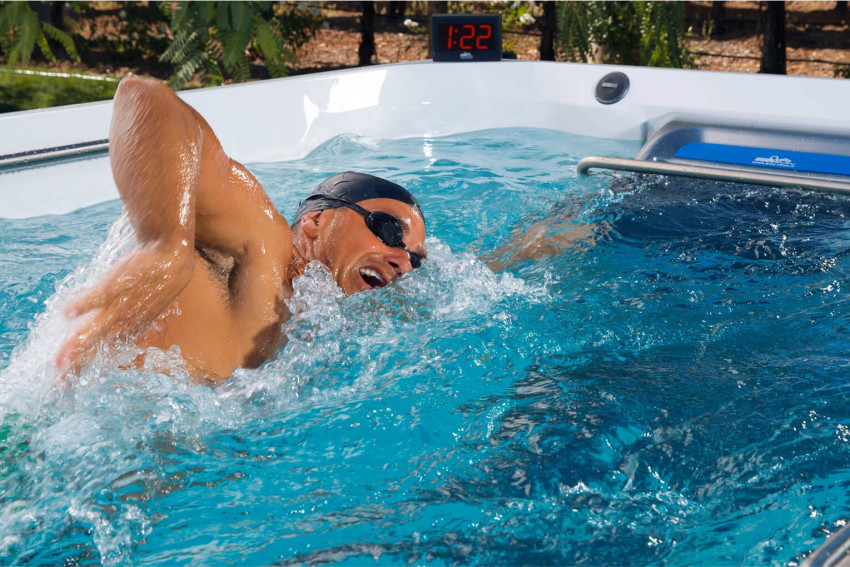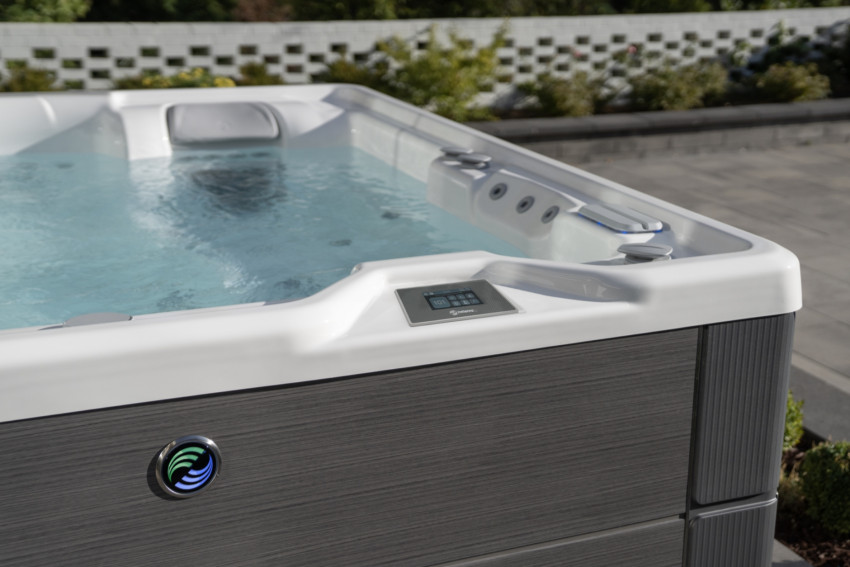A spa pool forms a luxurious addition to any backyard, and brings a wealth of benefits that extend to relationships, lifestyle, property value and health and wellness. But amongst all the excitement of having the warm and bubbling waters of a Hot Spring steps from your back door, it can be easy to forget that rules and regulations apply to the installation of a spa pool.
Between building consent, location, fencing and lockable covers, a prospective owner must consider a number of rules and regulations when choosing and installing their spa pool. But the exact rules can change from situation to situation.
In New Zealand most spa pools fall under the category of ‘small heated pool’, which is defined as a spa pool with a water surface area of five square metres or less. This definition covers all Spring’s models.
In this article we’ll define each of the NZ spa pool regulations that you need to factor in when shopping for a new machine, and work to understand which will apply to you.
Do spa pools need to be fenced in NZ?
At Hot Spring the most common question we get regarding Kiwi spa pool regulations is whether a spa needs to be fenced like a swimming pool.
A spa pool does not need to be surrounded by an approved pool safety barrier if it ticks each of the following four boxes:
- It has a water surface area of 5m² or less.
- The lip of the spa pool is at least 760mm above the ground (which covers all but one Hot Spring Model – the Freeflow Mini).
- The area surrounding the spa pool has no obstacles to climb on within 1200mm of the spa.
- The pool is covered by a compliant, lockable safety cover that features two compliant warning signs on opposing sides, and that is locked at all times when the spa pool is not in use (except when there is adult supervision).
If your spa pool fails to meet any of these requirements you will need to install an approved safety fence around it.
Do I need planning permission to install a spa pool?
As a general rule, a spa pool that ticks each of the boxes listed in the section above can be installed without planning permission, while a spa pool that doesn’t meet all the requirements, and therefore needs to be surrounded by a safety barrier, may require planning permission for the fencing element.
It’s important to note that planning permission is granted by local councils, each of whom bring their own set of rules and requirements regarding everything from placement to aesthetics. While we keep up to date with local regulations, it is critical that a new spa pool owner check what their responsibilities are with their local council.
Do spa pools need building consent in NZ?
While the terms are often used interchangeably, building consent is slightly different to planning permission. While a planning permit concerns the land on which a build is taking place, a building permit concerns the items that are being installed – in this case a spa pool and potentially a safety barrier.
As with planning permission, a spa pool that doesn’t require a safety barrier is unlikely to require a building permit, and a spa pool that requires a safety barrier is likely to require a building permit, but you’ll need to speak to your local council to check.
Does my spa pool need a concrete slab?
Your spa pool doesn’t necessarily need to be placed on a slab, though it does require a suitably strong, stable and level surface, and freshly set concrete will tick each of those boxes.
Your first step is to identify the ideal spot for your new spa pool. What is the surface in your preferred spot? If it’s concrete, perfect, but if it’s a timber deck, a balcony, or even pavers, it’s wise to speak to an engineer to ensure that the surface will be strong enough to cope with the weight of the spa pool. At Hot Spring we don’t recommend placing a spa pool directly on grass or earth.
It’s also worth noting that spa fence regulations may be easier to meet if you choose to install a concrete slab, as the fence posts can be installed straight into the concrete.
How close can a spa pool be to a boundary fence?
There is no nationwide rule that defines how close a spa pool can be installed to a boundary fence.
You may choose to locate the spa pool up against your house or another building or a fence in order for it to form part of the safety barrier. Windows that lead into the spa pool have to have child safety locks to comply with the NZ Building Code.
Can I put a spa pool on a deck?
Yes, in terms of rules and regulations, there should be nothing stopping you from installing a spa pool on your deck. But given spa pools can weigh multiple tonnes when filled with water and people, the limiting factor is instead the build quality of your deck.
While most professionally built decks will be strong enough to support the weight, it’s wise to get a professional to check the maximum load capacity and that the surface is level and even.

Can I build a deck around my spa pool?
If your spa can’t be placed on your deck, there is another option: placing the spa pool within the deck. You can either cut a section out of your existing deck and lower a spa pool in (provided the deck is the right height and there’s a strong enough foundation beneath), or you can put the spa pool in position first, then build a custom deck around it!
It’s important to note that this option will result in the lip of the spa pool being at deck level, rather than the required 760mm above, so you’ll need to build a safety barrier around the spa (and get the relevant planning permissions and building permits).
Do I need to register my spa pool with my local council?
In theory you do not need to register your spa pool with your local council if it meets the definition of a ‘small heated pool’ that does not need a safety barrier, i.e.:
- It has a water surface area of 5m² or less.
- The lip of the spa pool is at least 760mm above the ground.
- The area surrounding the spa pool has no obstacles to climb or within 1200mm of the spa.
- When not in use the pool is covered by a compliant, lockable safety cover that features two compliant warning signs on opposing sides.
That said, at Hot Spring we recommend that every prospective spa pool owner check with their local council to see whether they need to register their new purchase, and whether any rules and regulations beyond those mentioned in this article might apply.
Do I need to cover my spa pool when not in use?
If your spa pool is not surrounded by a safety barrier, then yes, you are required to cover it when it is not in use. This cover must be lockable and comply with all relevant regulations. Check out the Hot Spring range of compliant, lockable covers here.
What are the rules for installing a spa pool near an easement?
There are strict rules and regulations regarding building near easements – a specific part of a property that certain individuals, like employees of utility companies, must be granted access to. In New Zealand a spa pool must not be constructed on an easement, such as underground pipelines and cables.
What’s more, you cannot install a structural foundation within the ‘zone of influence’ – a line that extends 45 degrees from a point 150mm below the pipe or cabling, and a minimum of 1500mm from a surface point directly above the easement.
Do I need a registered builder or tradesperson to install my spa pool?
Whether or not you need a certified tradesperson to complete your spa pool installation will depend on the spa pool you choose.
- Builder: Hot Spring portable spa pools are designed for easy installation. Unlike an in-ground spa pool, you do not need a licensed builder to install your Hot Spring – you simply place it on an appropriate surface. That said, at Hot Spring we offer professional delivery and installation to take the work off your shoulders. Speak to your local dealer to find out more.
- Electrician: Larger and more luxurious Hot Spring models require access to more power than is provided by a standard outlet, and therefore need to be installed by a qualified electrician. Hot Spring’s Plug’n’Play models meanwhile can simply be plugged into a convenient power-outlet that is no more than 9-metres away from the spa, therefore you do not require a licensed tradesperson for installation.
- Plumber: Hot Spring spa pools can be filled with a garden hose, so you will only need to consult a qualified plumber if the placement of your spa pool leads to concerns about drainage.
Do I need to hire a crane to lift and install a spa pool?
Do you need to hire specialised lifting equipment to install your new spa pool? In terms of spa rules and regulations, the answer is no – it’s up to you to decide the best way to install your new spa. But spa pool regulations aside, the reality of the situation will often mean that the answer is yes.
In some situations you may be able to lift, shift and install your new spa pool manually. Take the smallest model in the Hot Spring range, the Freeflow Mini. Weighing 115kg dry, and measuring 183cm x 119cm x 71 cm, you and a few burly friends may be able to unload, carry and position this model all by yourselves.
But all other Hot Spring models are larger and heavier than the Mini, up to the Prism, with a dry weight of 540kg and a footprint of 6.5m², and the Endless Pools E2000 swim spa, at 1903kg and 14m². These machines cannot be moved manually.
Another consideration is the accessibility of your property. Is there a navigable path from the drop-off point on the road or driveway to where you want to place your spa? Does your property have a significant slope? The realities of your block may mean that dropping your spa pool in by crane or HIAB is the only way to go.
If you need a crane for your installation, no problems – your local Hot Spring dealer will be happy to arrange!
Does my new spa pool need a CPR sign?
According to swimming pool and spa regulations in New Zealand, private spa pool owners are not legally required to display a CPR sign next to their new spa. That said, a better question might be ‘should my new spa pool have a CPR sign?’ And the answer to that question, for most responsible owners, is yes.
The Swimming Pool and Spa Association of New Zealand (SPASA), for example, recommends that all spa owners display a CPR sign on or near their spas and pools. You can pick one up at most pool and spa retailers.
Can I install a spa pool indoors?
Yes, many Hot Spring customers have installed their spa pools indoors, such as in a sunroom. If you are considering this option there are three main considerations that you should take into account:
- Accessibility: Your chosen spa pool will need to fit through the doorways and hallways that lead to your preferred spot.
- Ventilation: Your chosen space must be capable of ventilating away the vapours and odours from water care chemicals.
- Drainage: If the spa pool was to develop a leak you need to ensure the water will drain away before it causes damage to the rest of your house.
It’s important to reiterate that while a number of rules and regulations apply to the entire country, local governments are ultimately responsible for spa pool installation, so it’s important to understand the rules and regulations in your area.
Once you know the exact rules that apply to you, it’s time to get shopping! Contact your local dealer today to book in a test soak, and discover the joys of a Hot Spring spa pool for yourself!
Note: In New Zealand spa pool rules and regulations are instituted and enforced by local authorities, and can vary from council to council. This means that spa fencing regulations, for example, can change from town to town. At Hot Spring we recommend that new spa pool owners speak with their local authorities or a professional consultant to understand the specific spa pool regulations in their area.


